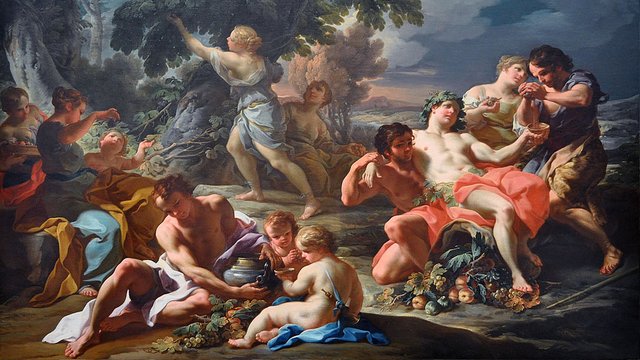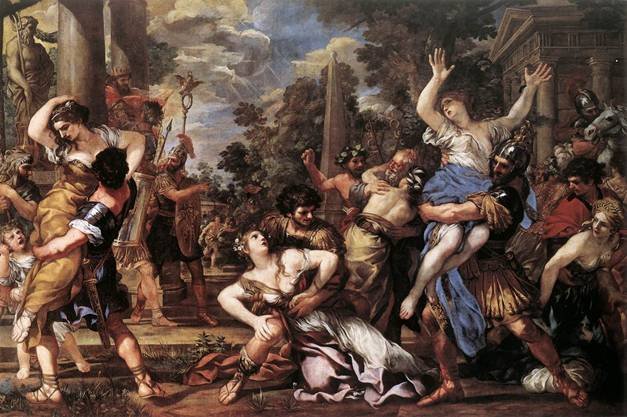German art
German Art describes the history of the visual arts in Germany. The Knight of Bamberg is an equestrian stone statue created by an anonymous medieval sculptor in Bamberg Cathedral.
The Danube School (in German: Donauschule or Donaustil) is the name of a circle of painters from the first third of the 16th century in Bayern and Austria. The artists of this school are Albrecht Altdorfer and Wolf Huber.

source
Hans Holbein the Elder and his brother Sigismund Holbein painted late Gothic religious works. Hans the Elder pioneered and led the transformation of German art from Gothic to Renaissance. His son, Hans Holbein the Younger, was an important painter of portraits and religious works of Northern Renaissance style.
The German Renaissance came when German artists travelled to Italy to learn more and were inspired by the artists of the Italian Renaissance. Albrecht Dürer, a well-known German artist of this period, initially worked in the established Germanic and northern forms, but was open to Renaissance influences. After visiting Italy, Dürer returned to Nuremberg in the middle of 1507 and remained in Germany until 1520.
The Düsseldorf school was a group of artists who mainly painted landscapes, and who were influenced by the Düsseldorf Academy. Founded in 1767, the influence of the academy grew in the 1830s and 1840s with the popularity of the Nazarene movement. The Nazarene name was adopted by a group of early 19th century German romantic painters who sought to revive honesty and spirituality in Christian art.
The main motivation of the Nazarenes was a reaction against the neoclassicism and routine art education of the Academy system. They hoped to return to the art of embodied spiritual values, and sought inspiration from artists of the Middle Ages and Renaissance, rejecting what they saw as the superficial virtuosity of later art.

source
Biedermeier refers to work in the fields of literature, music, visual arts and interior design in the period between the end of the Napoleonic Wars in 1815 and the revolutions of 1848.
In the 20th century, Plakatstil was an artistic poster style that began in 1900 and originated outside Germany. "Plakatstil" means "poster style" in German. The features of this style of art are often bold, straight from fonts with a very simple design.
Die Brücke (The Bridge) was one of two groups of German painters fundamental to expressionism, the other being the group Der Blaue Reiter. Die Brücke was a group of German expressionist artists formed in Dresden in 1905. The four architecture students Jugendstil (nouveau), directed by Hermann Obrist are:
- Fritz Bleyl (1880-1966)
Erich Heckel (1883-1970)
- Ernst Ludwig Kirchner (1880-1938)
Karl Schmidt-Rottluff (1884-1976)
Der Blaue Reiter (The Blue Rider) was founded in Munich, Germany in 1911. Wassily Kandinsky, Franz Marc, August Macke, Alexej von Jawlensky, Marianne von Werefkin and others founded the group in response to the rejection of Kandinsky's Doomsday painting in an exhibition by Neue Künstlervereinigung by another group of artists of which Kandinsky had been a member.
The name Der Blaue Reiter was derived from Marc's enthusiasm for horses, and Kandinskyp's love of blue. For Kandinsky, blue is the color of spirituality, and the darker the blue, the greater the human desire for eternity (see his 1911 book On the Spiritual in Art).
The New Objectivity, or Sachlichkeit Neue (new material of naturalness), was an artistic movement that emerged in Germany during the 1920s in opposition to expressionism. Therefore, after the expressionist. The term applies to works of art from painting, literature, music and architecture. It describes the stripping, the simplification of the Bauhaus building style and the Weissenhof solution, the urban planning and public housing projects of Bruno Taut and Ernst May, and the industrialization of the family characterized by the Frankfurt kitchen.
The Art of the Third Reich, the Nazi regime banned modern art, which it condemned as degenerate art (from the German: Entartete Kunst). According to Nazi ideology, modern art deviated from the prescribed standard of classical beauty. While the 1920s to 1940s are considered the heyday of modern art movements, the nationalist movements, did not suffer in conflict that abstract art, and Germany was no exception. German avant-garde artists were considered enemies of the state and a threat to the German nation. Many went into exile and lost both their reputation and credibility.
In July 1937, the Nazis organized a defamatory exhibition, Entartete Kunst (Degenerate Art), in Munich, which later traveled to eleven cities in Germany and Austria. The programme was conceived as an official condemnation of modern art, and included more than 650 paintings, sculptures, engravings and books from the collections of thirty-two German museums.
Expressionism, which had its origins in Germany, contained most of the paintings depicted. At the same time, the Nazis presented the Grosse Deutsche Kunstausstellung (Great German Art Exhibition) at the Haus der Deutschen Kunst (House of German Art). This exhibition shows the work of officially authorized artists such as Arno Breker and Adolf Wissel. By the end of four months Entartete Kunst had attracted more than two million visitors, almost three and a half times the number that visited the nearby Grosse Deutsche Kunstausstellung.
Excellent article. I learned a lot of new things. I signed up and voted. I will be glad to mutual subscription))))
you received an up vote from danlupi with voting power of 74.80%. Estimated dollar amount of $0.9